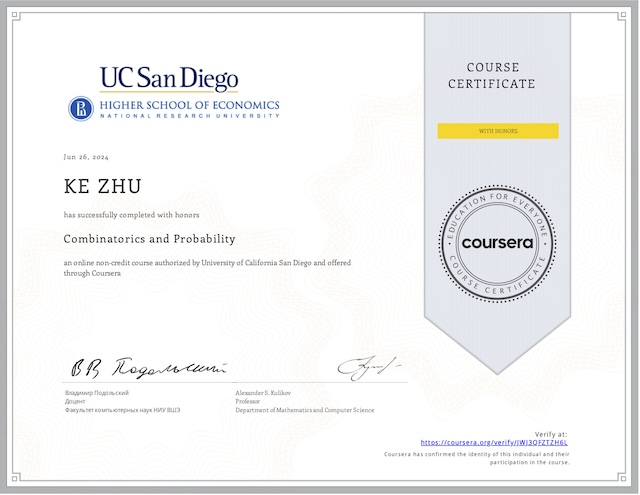Local area means private ownership. The distance between computers is usually below one kilometer, so it is the high speed and relatively error free communication with low cost. Therefore complex error-control is unnecessary.
Each machine is given a unique MAC address. Within a local area network, routing is just broadcasting all messages to all machines in the network. A medium access control protocol is required. The CSMA with Collision Detection actually it is used in local area networks.
The computers and network devices are connected to the cable systems through a Network Interface Card (NIC). In IEEE 802.1, the data link layer is divided into two sublayers:
- Logical Link Control (LLC) sublayer
- between network layer and MAC sublayer
- enhance service provided by MAC
- reliable transfer of frames
- Medium Access Control (MAC) sublayer
- coordinate access to medium
- connectionless transfer of datagrams
- usually don’t include a procedure for error control
- machines identified by MAC or physical address
- broadcast frames with MAC addresses
The IEEE defines several MAC standards including:
- IEEE 802.3 Ethernet
- IEEE 802.5 Token Ring
- IEEE 802.11 Wireless LAN
Each MAC standard has an associated set of physical layers over which it can operate.
| OSI | IEEE 802 |
| Network layer | Network layer |
| Data link layer | LLC: 802.2 |
| Data link layer | MAC: 802.3(CSMA-CD), 802.5(Token Ring), 802.11 (Wireless), … |
| Physical layer | Various physical layers |
The LLC sublayer builds on the MAC sublayer’s datagram service to provide three HDLC services:
- Reliable connection-oriented service
- Acknowledged connectionless service
- Unacknowledged connectionless service
After the TCP and IP have added their minimum of 20 bytes of headers, the LLC sublayer adds three or four bytes and the MAC sublayer then adds its header and the trailer.
[MAC header] {LLC header} (IP Packet) [FCS]Ethernet
The Local Area Network protocol Ethernet was developed in the 1970s. It has been the dominant Local Area Network standard.
- 1970, ALOHA net radio network was deployed in Hawaiian islands.
- 1973, Metcalf ad Boggs invent Ethernet – random access in wired net.
- 1978, DIX Ethernet II Standard.
- 1985, IEEE 802.3 LAN Standard (10 Mbps)
- 1995, Fast Ethernet (100 Mbps)
- 1998, Gigabit Ethernet
- 2002, 10 Gigabit Ethernet
Instead of local area network, the original IEEE 802.3 standard was designed for a bus-based coaxial cable, in which the terminal transmissions are broadcast over the bus medium using CSMA-CD. Recall that the critical element in CSMA-CD is the mini-slots that are used by stations to seize control of the channel and to resolve contentions.
The IEEE standard also specifies to use a truncated binary exponential backoff algorithm to schedule the retransmission in case of a collision. If a frame is about to undergo it’s n-th retransmission attempt, it’s retransmission time is determined by selecting an integer number equally likely in the range (0, 2k-1), where k = min(n, 10). The increase of retransmission range after each attempt is intended to increase the likelihood that retransmission will succeed. Up to 16 retransmissions will be attempt, after that, the system gives up.
For collision detection, all frames must take more than one round trip propagation to send a field that a transmission is still taking place when the noise burst gets back to the sender. Ethernet has limit of 2500 meters with 4 repeaters. So round-trip propagation is about 50 microseconds. In a 10 Mbps Ethernet, that means the frame has to be at least 500 bits long. Therefore, the minimal frame size is defined as 512 bits (64 bytes).
Recall that CSMA-CD maximum throughput depends on the normalized delay-bandwidth product a = tprop / X, where X is the frame transmission time. To accommodate a 10 times increase in network bandwidth, it a must accompanied by either 10 times decrease in distance (propagation time) or 10 times increase in the minimum frame size.
Fast Ethernet, operates at 100 Mbps. To preserve compatibility with 10 Mbps Ethernet, the frame format, interface and procedures have been kept the same.
Gigabit Ethernet, the minimum frame size is increased to 512 bytes as the minute slot time increases. Note that the frame structure preserved, but CSMA with Collision Detection is essentially abandoned and operated primarily in switch model. Today, 10 Gigabit Ethernet are extensively deployed in metro networks and data centers.
Wireless Ethernet: CSMA-CA
Wireless technologies have significant challenges:
- Reliability. Wireless transmission is susceptible to noise and interference.
- Coverage. Signal strengths varies in space and time because of fading effect.
- Security. Radio signal can be intercepted by eavesdroppers.
Moreover, the hidden terminal problem causes the CSMA-CD is not suitable for the wireless Ethernet. Assume two stations A and C attempt to transmit to a station that is located between them, say B. The two stations, A and C may be sufficiently distant from each other that they cannot hear each other’s transmission. Consequently, when they sense the channel, they may detect it as idle, even the other station is indeed transmitting.
1. A transmits data frame to B
A - - - → - - - B - - - - - - - C
2. C senses medium, however A is hidden from C
3. C transmits data frame, then collides with A at B
A - - - → - - - B - - - ← - - - CThe Carrier Sensing Multiple Access with Collision Avoidance protocol (CSMA-CA) was developed to prevent this type of collisions. It then relies on a handshake protocol.
1. if station A wants to send a data frame to station B, station A first sends a Request-To-Send (RTS) frame.
A - - - RTS → - - - B - - - - - - - C
2. If station B received RTS, B issues a Clear-To-Send (CTS) frame to all stations.
A - - - ← CTS - - - B - - - CTS → - - - C
3. All stations within range of B are therefore aware that A has been given the permission to send. So they remain quiet while station A proceeds with its data frame transmission.
A - - - Data → - - - B - - - - - - - C
4. If the data frame arrives with an error, B responds with an acknowledgment.
A - - - ← ACK - - - B - - - ACK → - - - CIn this manner, CSMA-CA protocol coordinates stations so that collision is avoided. However it is still possible for two stations A and C to send RTS frames at the same time, so they collide at B. In this case, the stations must execute a back-off to schedule a later attempt.
Ad-Hoc Communications
An ad-hoc network is a temporary association of group of stations. Within the range of each station, all stations need to exchange information. For instance, presentation in a meeting, or distributed computer game, etc.
Basic Service Set (BSS) is a basic building block of IEEE 802.11 architecture. It is defined as a group of stations (within range of each other) coordinating their access to the communication medium. The geographical area covered by the BSS is Basic Service Area (BSA). A single BSS can be used to form an ad-hoc network. Stations in BSS can communicate with each other. Distinct colocated BSS’s can coexist.
Extended Service Set (ESS, also called infrastructure network, informally) is a set of BSS can be interconnected by a Distribution System. Each BSS is like a cell and stations in BSS communicate with an Access Point (AP). Portals attached to Distribution System provide access to the Internet.
BSSA(A1, A2, ...) ⇔ AP1 ⇔ Portal1 ⇔ Distribution System ⇔ Portal2 ⇔ AP2 ⇔ BSSB(B1, B2, ...)IEEE 802.11 wireless LAN standard was stimulated by the availability of unlicensed spectrum. 3 types of frames are supported:
- Management frame
- Station association & disassociation with Access Points
- Timing & synchronization
- Authentication & de-authentication
- Control frame
- Handshaking
- ACKs during data transfer
- Data frame
- Data transfer
Wireless Ethernet: MAC Sublayer
The Media Access Control sublayer is responsible for:
- channel access procedure
- protocol data units (PDU) addressing
- frame formatting
- error control
- fragmentation
- reassembly of the service data units (SDU)
- support security services through authentication and privacy mechanisms
- define management services to support roaming within an Extended Services Set (ESS) and assist stations in power management.
The IEEE 802.11 Media Access Control Protocol is specified in terms of coordination functions that determine:
- when a station (in a basic service set) is allowed to transmit
- when it may be able to receive protocol data units (PDU) over the wireless medium
It defines two coordination functions:
| point coordination function | Optional. May be implemented by the access point to support a connection-oriented time-bounded transfer of service data units. The medium can alternate between the contention period and contention-free period (media is controlled by the access point, and stations don’t need to contend for channel access). |
| distributed coordination function | Required for all stations. Provide support for asynchronous data transfer on a best-effort basis. Transmission medium operates in the contention mode exclusively, requiring all stations to content for the channel for each packet transmitted. |
Priority through Interframe Spacing
The distributed coordination function is based on CSMA-CA protocol. All stations are obligated to remain quiet for a certain minimum period after a transmission has been completed called Interframe Space (IFS). The length of the interframe space depends on the type of frame that the station is about to transmit.
| Frame | the period to wait before contending for the channel |
| High-priority frames (acknowledgements, clear-to-send, data frames of segmented service data units, etc) | Short IFS (SIFS) |
| point coordination function (to initiate contention-free periods) | Point coordination function IFS (PIFS) |
| distributed coordination function (to transmit data and PDUs) | Distributed coordination function IFS (DIFS) |
- If channel is still idle after DIFS period, a ready station can transmit an initial PDU.
- If channel becomes busy before DIFS, the station must schedule backoff time for reattempt.
A station that completes a frame transmission is not allowed to transmit immediately.
Carrier Sensing in IEEE 802.11
In IEEE 802.11, carrier sensing is performed at both:
- the network interface (referred to the physical carrier sensing), and
- the MAC sublayer (referred as virtual carrier sensing)
- used by a source station to inform the transmission time to all other stations in the Basic Service Set
- all stations adjust Network Allocation Vector to indicate when channel will become idle
The channel is busy if either sensing is busy.
Wireless channels cannot handle very long transmissions due to there are relatively large error rates. Large service data units may require fragmentation to increase transmission reliability. The collision avoidance portion of CSMA-CA is performed through a random backoff procedure.
My Certificate
For more on Local Area Networks, please refer to the wonderful course here https://www.coursera.org/learn/peer-to-peer-protocols-local-area-networks
Related Quick Recap
I am Kesler Zhu, thank you for visiting my website. Check out more course reviews at https://KZHU.ai



